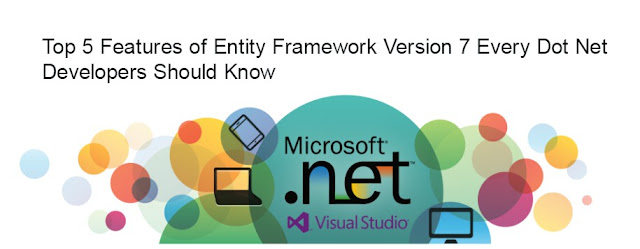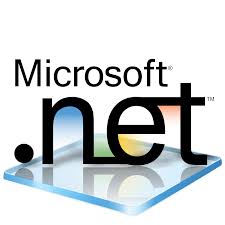Learn Microsoft Dot Net from Basics - Dot Net Tutorial for Freshers - Easy Guide
1. What is OOPS?
OOPS is abbreviated as Object Oriented Programming system in which programs are considered as a collection of objects. Each object is nothing but an instance of a class.
2 . Write basic concepts of OOPS?
Following are the concepts of OOPS and are as follows:.
Abstraction.
Encapsulation.
Inheritance.
Polymorphism.
3. What is a class?
A class is simply a representation of a type of object. It is the blueprint/ plan/ template that describe the details of an object.
4. What is an object?
Object is termed as an instance of a class, and it has its own state, behavior and identity.
5 . What is Encapsulation?
Encapsulation is an attribute of an object, and it contains all data which is hidden. That hidden data can be restricted to the members of that class.
Levels are Public,Protected, Private, Internal and Protected Internal.
6 . What is Polymorphism?
Polymorphism is nothing butassigning behavior or value in a subclass to something that was already declared in the main class. Simply, polymorphism takes more than one form.
7 . What is Inheritance?
Inheritance is a concept where one class shares the structure and behavior defined in another class. Ifinheritance applied on one class is called Single Inheritance, and if it depends on multiple classes, then it is called multiple Inheritance.
8. What are manipulators?
Manipulators are the functions which can be used in conjunction with the insertion (<<) and extraction (>>) operators on an object. Examples are endl and setw.
9. Define a constructor?
Constructor is a method used to initialize the state of an object, and it gets invoked at the time of object creation. Rules forconstructor are:
Constructor Name should be same asclass name.
Constructor must have no return type.
10. Define Destructor?
Destructor is a method which is automatically called when the object ismade ofscope or destroyed. Destructor name is also same asclass name but with the tilde symbol before the name.
Quick Links : Get easiest and Simplest idea about Dot Net
11. What is Inline function?
Inline function is a technique used by the compilers and instructs to insert complete body of the function wherever that function is used in the program source code.
12. What is operator overloading?
Operator overloading is a function where different operators are applied and depends on the arguments. Operator,-,* can be used to pass through the function , and it has their own precedence to execute.
13. What is an abstract class?
An abstract class is a class which cannot be instantiated. Creation of an object is not possible with abstract class , but it can be inherited. An abstract class can contain only Abstract method. Java allows only abstract method in abstract class while for other language it allows non-abstract method as well.
14. What is an interface?
An interface is a collection of abstract method. If the class implements an inheritance, and then thereby inherits all the abstract methods of an interface.
15. What is exception handling?
Exception is an event that occurs during the execution of a program. Exceptions can be of any type – Run time exception, Error exceptions. Those exceptions are handled properly through exception handling mechanism like try, catch and throw keywords.
16. What is dynamic or run time polymorphism?
Dynamic or Run time polymorphism is also known as method overriding in which call to an overridden function is resolved during run time, not at the compile time. It means having two or more methods with the same name,same signature but with different implementation.
17. What is static and dynamic binding?
Binding is nothing but the association of a name with the class. Static binding is a binding in which name can be associated with the class during compilation time , and it is also called as early Binding.
Dynamic binding is a binding in which name can be associated with the class during execution time , and it is also called as Late Binding.
18. What is a copy constructor?
This is a special constructor for creating a new object as a copy of an existing object. There will be always only on copy constructor that can be either defined by the user or the system.
19. Difference between class and an object?
An object is an instance of a class. Objects hold any information , but classes don’t have any information. Definition of properties and functions can be done at class and can be used by the object.
Class can have sub-classes, and an object doesn’t have sub-objects.
20. What is the difference between structure and a class?
Structure default access type is public , but class access type is private. A structure is used for grouping data whereas class can be used for grouping data and methods. Structures are exclusively used for data and it doesn’t require strict validation , but classes are used to encapsulates and inherit data which requires strict validation.
Learn OOP’s Concepts in Dot Net - Click Here
x


Comments
Post a Comment